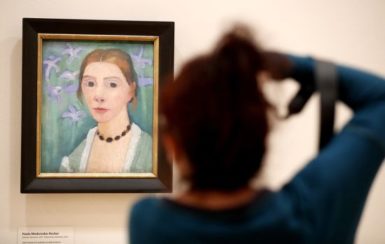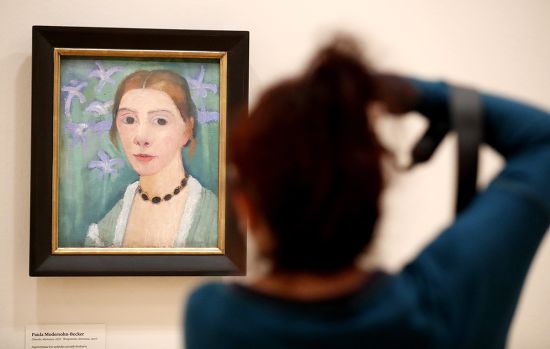[ad_1]

A visitor takes a photo of a self-portrait by Paula Modersohn-Becker at the Guggenheim Museum in Bilbao, Spain.
SHUTTERSHOCK/LUIS TEJIDO
Museums will soon have a new resource to help them identify—and correct—gender disparity among artists in their collections. In 2020, the Spanish advocacy nonprofit Mujeres en las Artes Visuales (MAV) will release a digital-analysis service providing details on the gender breakdown of a museum’s holdings, and offer tailored recommendations for methods of improvement.
The service’s features will include being able to analyze how much money museums are spending on the acquisition of works by women compared to those by men. Additionally, the site will compare how much space those works occupy in galleries and how much time each work is on view to the public.
The tool arrives amid an increased push for more diverse representation in the collections of museums in the United States and abroad. Earlier this year, researchers at Williams College published the results of a survey of the collections of 18 major U.S. museums: 85.4 percent of the works were found to have been created by white artists, and 87.4 percent by men. Soon followed the release of data gathered in a collaboration between Artnet and Art Agency Partners showing that between 2008 and 2018, only 11 percent of art acquired by the nation’s premier museums was by women.
María José Magaña, the president of MAV, told El Pais that the objective of the self-diagnostic tool is not “to carry out audits that denounce [a museum’s] methods as erroneous, but to learn together to improve.” Magaña formed the research team that developed the technology with sociologist Alma Porta Lledó; they will be present the technology at a forum this Friday and Saturday at the Thyssen-Bornemisza National Museum in Madrid, before a pilot version of the service is tested at institutions in Latin America. MAV hopes the software will eventually become ubiquitous in museums worldwide.
[ad_2]
Source link

